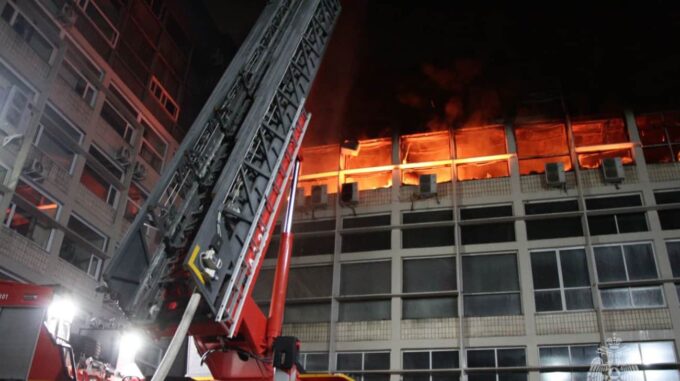On the night of May 29 in Saint Petersburg, an extraordinary and alarming event occurred — a large-scale fire broke out on the territory of one of Russia’s largest strategic enterprises in the field of microelectronics

This manufacturing facility, known as “Avangard,” plays a vital role in Russia’s national security and defense-industrial complex, as it is engaged in the production of radio-electronic products, microchips, devices, and basic components for military and civilian electronics. Given its status as a federal scientific-production center and a system-forming enterprise of Russia, any emergency situation at its site attracts significant interest and concern among experts and local residents. According to information circulated by Russian Telegram channels and eyewitnesses, the fire started around 1 a.m. Preliminary reports indicate that the ignition occurred within production facilities involved in manufacturing and assembling microchips, as well as radio-electronic products. Witnesses describe a thick column of black smoke rising into the night sky above the area and flames engulfing an area approximately 100 square meters. This suggests the scale of the fire and potential risks to the environment and nearby residential neighborhoods. Officially, rescue services are already working at the scene. The Russian Ministry of Emergency Situations in Saint Petersburg confirmed that firefighting operations are underway at Kondratyevsky Avenue, 72, where the “Avangard” plant’s production building is located. The fire reportedly involves a blaze on the fifth floor of a six-story building, where the most severe part of the fire has taken place, affecting an area of about 100 square meters. Local authorities and rescue services emphasize the deployment of necessary resources to quickly extinguish the fire and prevent its spread. Notably, prior to the start of the fire, reports emerged online about explosions near the plant. These accounts raised additional suspicions regarding the possible cause of the fire. However, no official statements have yet been made regarding the use of drones or other forms of attack, and information about a potential sabotage remains uncertain for now. Further investigations and analysis will be needed to determine the true nature of the ignition. “Avangard” is one of the most important high-tech enterprises in Russia. It performs key functions in the production of radio-electronic products, microchips, and components of incompatible applications that are of strategic importance for the country’s defense and security. Its status as a federal scientific-production center grants it a special position within Russia’s system of system-forming enterprises, and any incident at this facility raises serious questions about stability and security in this sector. Experts, policymakers, and the public are closely monitoring the development of the situation, as in the current geopolitical climate and amid large-scale military conflicts, any incidents in the defense-industrial sector generally have a significant impact on the security situation both within Russia and beyond its borders. At the same time, attention is also focused on potential causal links and dilemmas regarding the security of critical infrastructure in the region. Local authorities and emergency services have already taken immediate measures to prevent possible information leaks, curb further fire spread, and ensure the safety of workers and residents. However, vigilance is increasing, as suspicious incidents at strategic sites often bear signs of targeted attacks or sabotage actions, which could lead to even more serious consequences. Currently, the situation remains under control of rescue services, and specialists are working to limit the extent of the fire and determine its exact cause. Nevertheless, the safety of Russia’s strategic facilities once again remains in the spotlight of public and political attention, as any incident in this sector could have serious repercussions for the country’s internal stability and security.

